Introduction
The e-learning industry has seen tremendous growth in recent years, revolutionizing education with its flexible and accessible digital platforms. With the market estimated to reach $250 billion in 2020, it's clear that online learning is here to stay. This article explores various aspects of e-learning, from understanding the industry and the key features of e-learning applications to the technologies used in their development.
It also provides a step-by-step guide to creating an e-learning app, designing user-friendly interfaces, and implementing accessibility standards. The article emphasizes the importance of testing and quality assurance in e-learning applications and offers insights on launching and marketing these apps effectively. Additionally, it delves into real-life case studies and success stories, showcasing how innovative approaches and emerging trends are shaping the future of e-learning.
Whether you're an educator or a business looking to venture into the e-learning space, this comprehensive guide will equip you with the knowledge you need to create engaging, effective, and user-centric e-learning applications.
Understanding the E-Learning Industry
E-learning has become a cornerstone of contemporary education, leveraging cutting-edge digital technologies to reshape the pedagogic landscape. This virtual educational environment provides unparalleled flexibility and accessibility, enabling learners from every corner of the globe to obtain quality education without the limitations of geography or timing. A testament to this advancement is the e-learning sector's significant market expansion, as seen in the exponential uptake of online courses, webinars, and other digital learning tools.
Drawing insights from industry pioneers, like Nets which skillfully converted complex technical data into user-friendly formats, underscores the necessity for engaging content delivery in e-learning applications. The aim is to inspire self-guided discovery amongst users, making the learning process both interactive and informative. With the global e-learning market size reaching an estimated $250 billion in 2020, it's evident that online learning platforms are not just a fleeting trend but a preferred method for continuous, life-long education.
This surge in e-learning’s popularity springs from its ability to provide personalized learning experiences at a substantially lower cost compared to traditional methods. In the words of industry professionals, 'Stay ahead in the digital age!' encapsulates the spirit of e-learning—an innovative, forward-thinking solution to today’s educational demands.
It’s clear that e-learning's growth trajectory points towards a future where digital learning is deeply embedded in our approach to education and skill development.
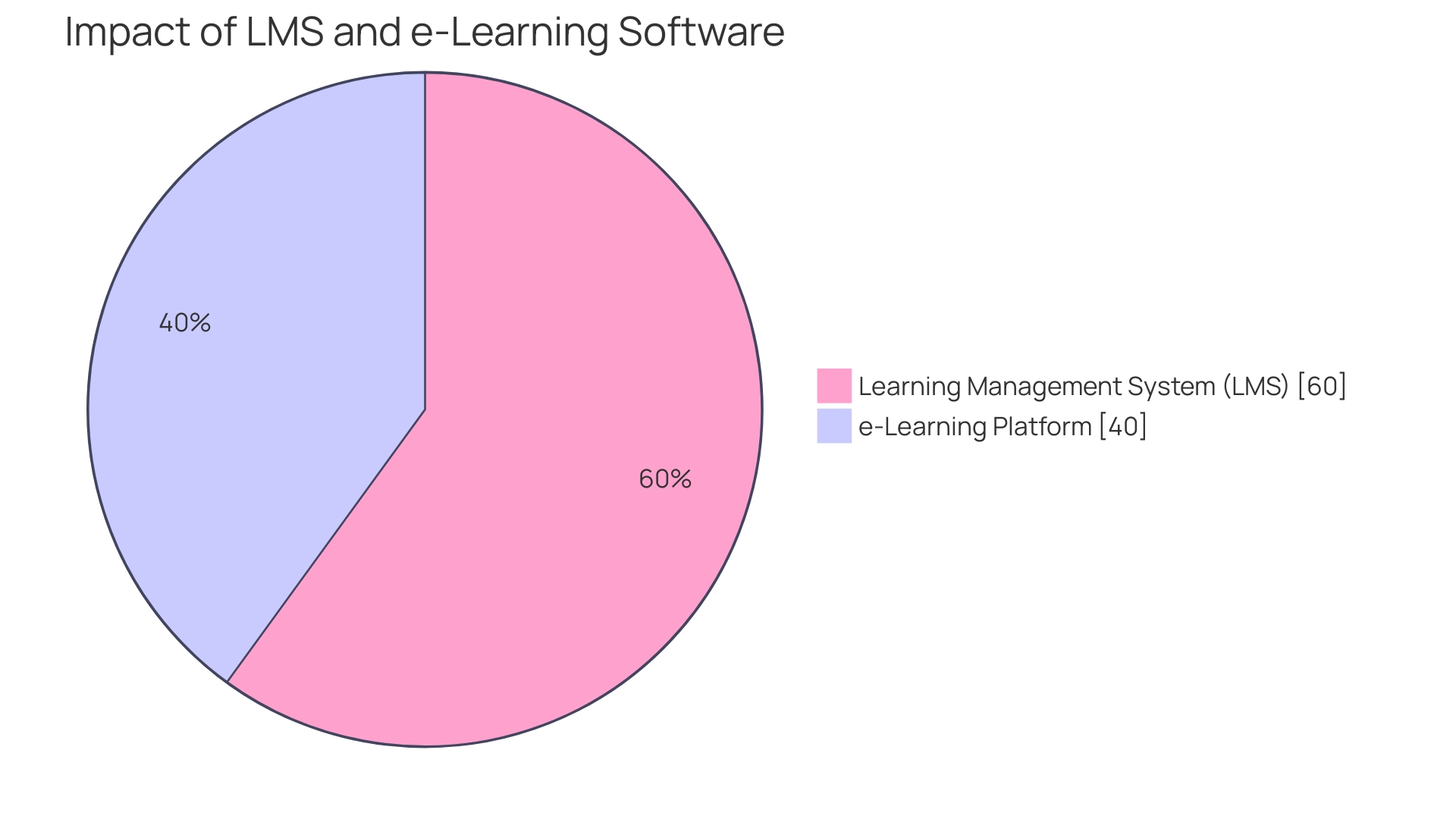
Key Features of E-Learning Applications
Constructing an e-learning application calls for an in-depth understanding of the features that will captivate your audience and fulfill educational objectives. Key elements to prioritize include robust user authentication mechanisms, streamlined course management systems, and interactive lessons that engage and challenge users. Progress tracking should be intuitive, offering users insights into their learning journey, while communication tools must facilitate seamless interaction among peers and educators.
Reflecting on the transformation Nets underwent, one can appreciate the significance of presenting technical content in an accessible and compelling format. Their method of reshaping dense material into engaging formats underscores the importance of thoughtful user interface design in fostering self-motivated exploration within an e-learning platform.
Drawing from the experiences shared by Karmela Peček, an Instructional Designer at eWyse Agency, it's evident that comprehensive training is vital within sectors like finance where adherence to international regulations is paramount. Hence, an e-learning application should not only be about content delivery but also ensure it meets specific regulatory compliance and fosters continuous professional development. Incorporating business indicators can aid organizations to ascertain the transformative impact of their e-learning initiatives, as suggested by recent reports emphasizing the need for businesses to perceive the broader benefits of implementing e-learning solutions.
These considerations, blended with insights into creating universally accessible and diverse learning environments, mark the trail for developing an authentic and innovative e-learning application.
Technologies Used in E-Learning App Development
Crafting an e-learning application entails much more than just the concept; it involves meticulously selecting a blend of technologies that shape the learner's experience. At the core of any e-learning endeavor lies the Learning Management System (LMS), a pivotal platform enabling educators to craft, deliver, and manage educational content effectively while allowing learners to engage with the material innovatively. Similarly, Content Management Systems (CMS) facilitate the organization and alteration of content, making it a breeze for users to access updated material.
Embracing a responsive design ensures that the application is accessible across various devices, from desktops to smartphones, aligning with contemporary Learning approaches where learning is unbound by location. Mobile app development frameworks are instrumental in this respect, empowering developers to build seamless, cross-platform educational experiences. Moreover, engaging e-learning hinges on interpreting learners' habits and preferences, which is where data analytics comes into play.
By examining data, educational experiences can be tailored to enforce more effective learning outcomes.
Considering the dynamism of technology use in e-learning, instructional designers, like those at eWyse agency, strive to present technical data in captivating and stimulating ways, transforming how learners interact with content. As echoed in the experiences of digital payment solution providers like Nets, the objective is not only to educate but also to inspire self-driven exploration of knowledge.
E-learning's future is dictated by its ability to integrate technologies such as machine learning, AI, and IoT in multifaceted ways that nurture personalized, intuitive learning experiences, as seen in the surge of mobile learning capabilities. These advancements not only elevate the quality of e-learning solutions but also bear upon development costs and the strategic investment decisions stakeholders must navigate. Ultimately, as e-learning evolves, it is crucial to blend technological prowess with a learner-centered approach, ensuring the delivery of content is as impactful as it is innovative.
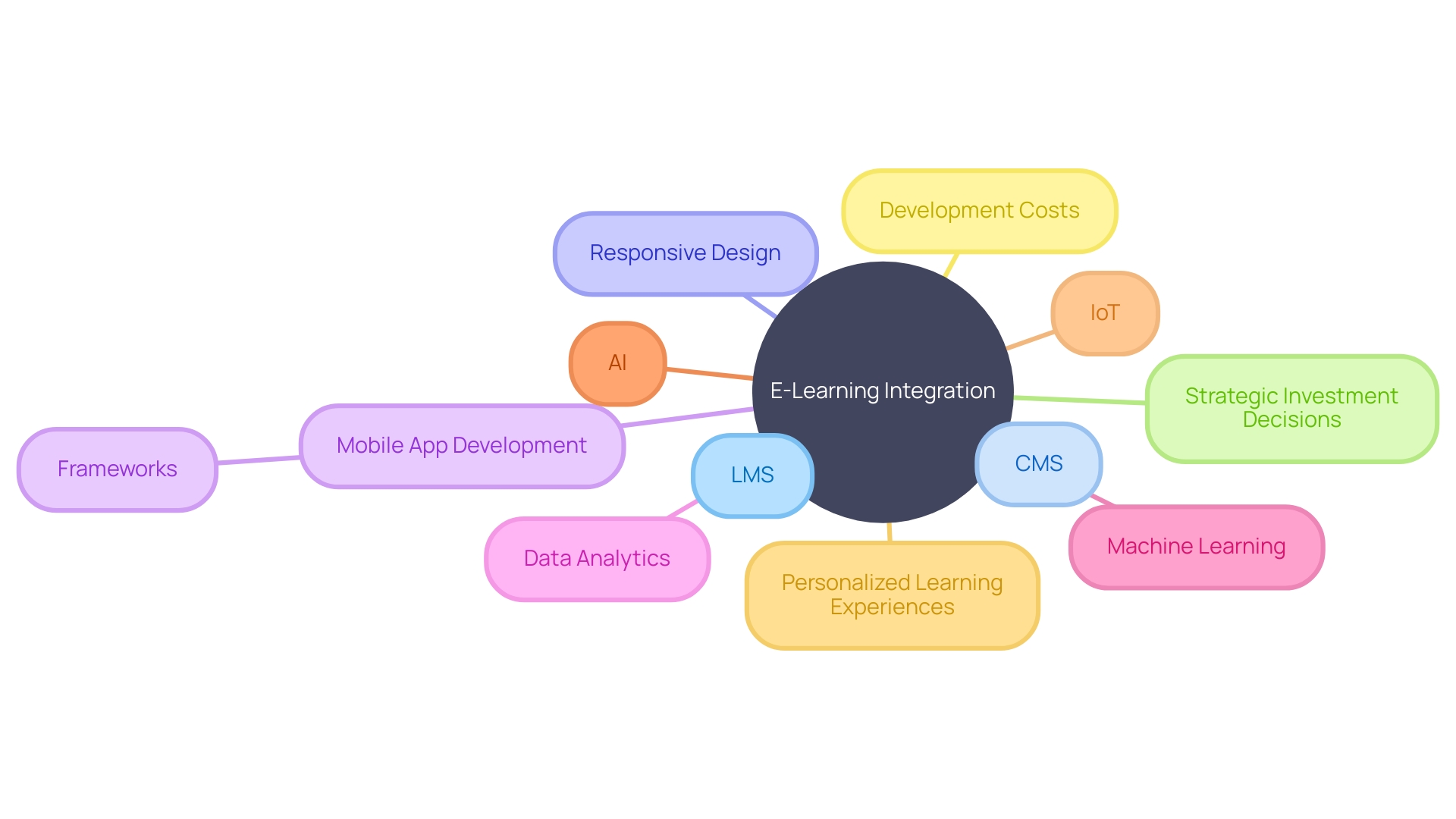
Step-by-Step Guide to Developing an E-Learning App
Embarking on the creation of an e-learning application involves strategic planning, careful design, and a mix of technical skills to turn an idea into a sophisticated tool for education. Crafting an e-learning platform is more than just programming; it's about shaping an educational journey that is both engaging and informative. A great example comes from a company like Nets, which understood the importance of presenting information in a format conducive to learning when they faced the challenge of displaying technical data.
They creatively transformed dense tables and schemes into captivating formats, enriching the user's discovery process.
To create an effective e-learning platform optimized for mobile, begin with meticulous market research, noting what competitors offer and identifying your target audience's needs. This insight serves as the compass guiding your platform's direction, ensuring features are aligned with users' educational goals. The content should flow logically, with interactive elements like quizzes and simulations to bolster engagement and retention.
Clear, concise language and tangible examples will demystify complex topics, aiding in understanding.
Following the initial planning, defining the app's purpose is next, keeping in mind your unique value proposition in relation to what’s currently available. What sets your app apart in terms of content delivery, user engagement, and learning outcomes? Pinpointing this uniqueness is critical to the app’s success.
The eLearning landscape is broadening, with a marked rise in the utilization of online platforms and virtual classrooms, making education widely accessible without traditional time and location constraints. Providing a flexible educational experience that learners can tailor to their schedules is no longer optional but essential. eLearning's evolution is palpable, underscored by a surge in demand, which means platforms must be meticulously constructed to meet these expanding needs.
As we develop e-learning software, it’s vital to remember that the goal is to create a program that can evolve. Development isn't only about coding but improving the system continually to adapt to the requirements of today’s learners, as we aim to serve not just present needs but anticipate future demands in the education industry.
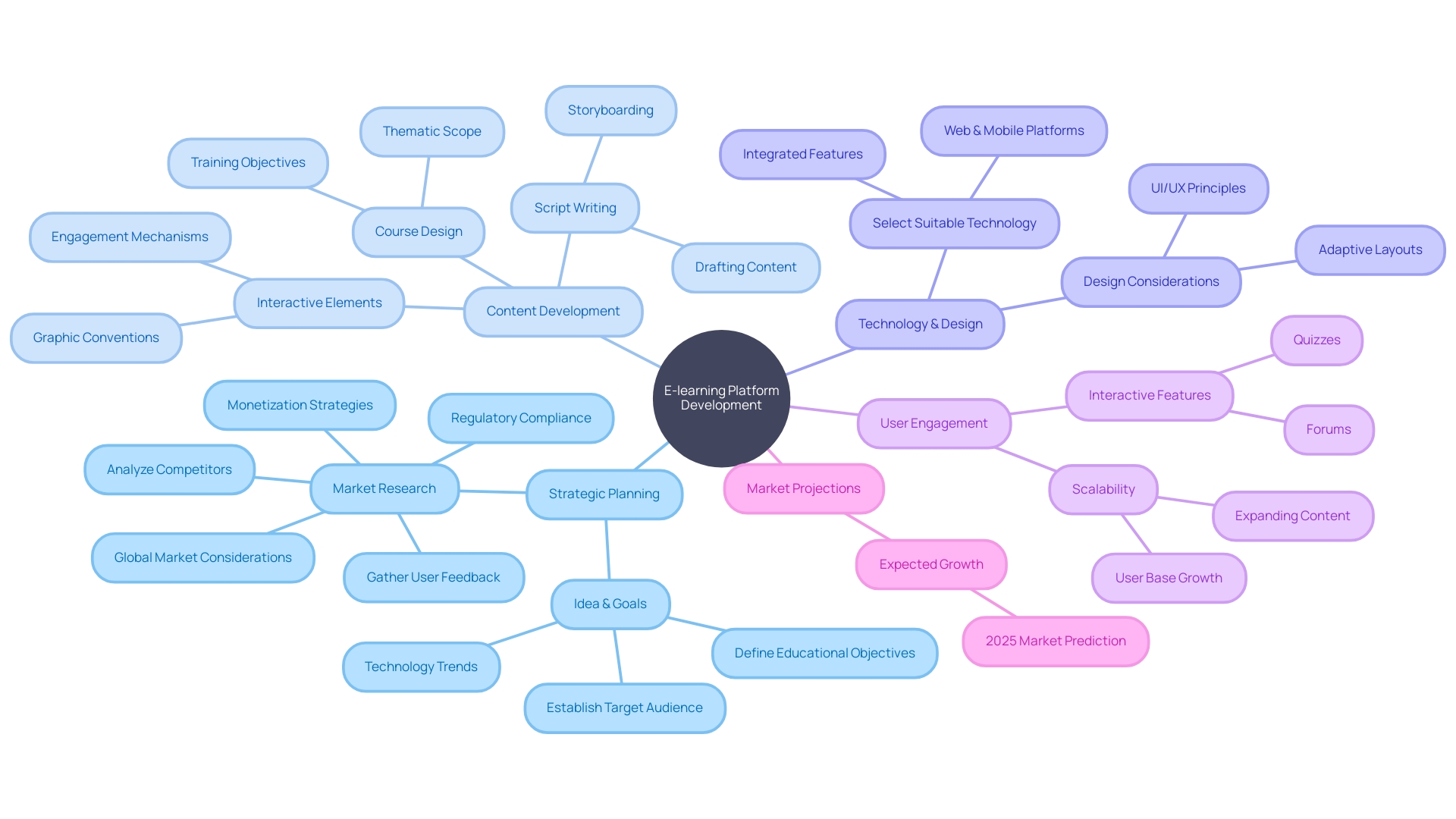
Designing User-Friendly Interfaces
When crafting a user-friendly interface for an e-learning application, it's essential to connect the dots between aesthetic appeal, ease of navigation, and adaptability to different user needs. Master the art of typography, capitalizing on elements like font size, tracking, and kerning, to convey your message with clarity and emphasis. For example, altering the arrangement of just one word can significantly affect perception, whether it conveys shock or excitement.
Responsive design is no longer optional; it's a necessity. In our mobile-first world, a staggering 50% of web traffic originates from mobile devices, with a fast-loading mobile site boasting a 15% higher conversion rate over the average. A site that's not mobile-friendly is quickly abandoned; 61% of users will switch to another site if they don't find what they're looking for swiftly.
Impress upon your users with a seamless mobile experience, and you could see a 90% likelihood of repeat business from B2B buyers, as compared to a mere 50% from those who endured a poor experience.
Take inspiration from Nets, the Copenhagen-based digital payment solutions provider, who faced the challenge of presenting technical data accessible. They creatively transformed mundane tables and schemes into fascinating formats that invite users to explore the information voluntarily. By embracing this model of innovation, you too can present e-learning material that not only educates but also engages.
Bear in mind the nine challenges of designing accessible e-learning courses to create content that's inclusive to all learners. A comprehensive accessibility strategy will cater to visual, auditory, motor, and cognitive abilities, ensuring that each student is afforded an equal opportunity to learn. In doing so, you foster a learning environment that celebrates diversity and enables all participants to achieve their fullest potential.
This approach should permeate every facet of your UI design, from color choices to navigation layouts.
Stay abreast of the latest techniques to elevate your UI designs. Employ user story maps to showcase the user journey or apply design thinking throughout six core stages to broaden the impact of your UX methods. By remaining attuned to evolving trends and user behaviors, and directly addressing the statistics of mobile user expectations, you can optimize not only the efficacy of your e-learning application but also its lasting appeal.
Implementing Accessibility Standards
Accessibility in e-learning applications is more than a technical requirement; it embodies the essence of inclusive education. By seamlessly incorporating features that cater to varied abilities, these applications enable equal learning opportunities. This extends beyond mere compliance with laws like the ADA and WCAG; it is about embedding universal design principles at the very core of e-learning development.
For instance, providing alternative text for images isn't just about fulfilling a checklist. When Nets, a payments solution provider, faced the challenge of making technical data digestible, they transformed tables and schemes into dynamic, user-driven interfaces. Similarly, e-learning should strive to convert static information into interactive experiences with options like keyboard accessibility and captions for videos, vital for engaging learners with different needs.
With thoughtful implementation, you not only accommodate diverse learning preferences but also foster a climate where everyone's potential can be realized.
Testing and Quality Assurance
For e-learning applications to thrive in a competitive digital landscape, particularly in the vibrant financial sector, rigorous testing and quality assurance protocols are non-negotiable. This ensures not only the functionality of the app but also its ability to engage and educate users, an objective highlighted by companies like Nets in their robust e-learning platforms. These platforms are meticulously designed to transform technical data into compelling, user-friendly content, as emphatically noted by Karmela Peček from eWyse Agency.
A multi-dimensional testing strategy is imperative, encompassing functional testing to verify each feature works as intended and usability testing to ensure learner's ease of interaction with the app. Performance testing scrutinizes the app's responsiveness and reliability under various conditions, while security testing proactively identifies vulnerabilities, an aspect critical in the financial sector where data protection is paramount. Moreover, user acceptance testing is where the rubber meets the road; it's the stage where end-users confirm the app meets their requirements and is ready for launch.
These approaches are aligned with the latest insights from the instructional design and EdTech sectors, where a staggering demand for quality and efficiency drives innovation. The emphasis on planning and preparing, including scope definition and tool selection, parallels the shift-left movement and automation strategies reported in the World Quality Report during the economic recovery era—an era that witnessed a substantial rise in software development and QA activities. The overarching goal remains consistent: to achieve superior quality e-learning solutions that are effective, engaging, and reliable for users in various industries.
Launching and Marketing Your E-Learning App
Launching and marketing an e-learning app requires a well-crafted strategy to draw the attention of learners and educators in a crowded digital space. Innovation is key, much like Nets, the European digital payment solution provider, reimagined the representation of technical data for enhanced user engagement. Your goal is to create an educational experience that users are eager to explore autonomously.
Understanding your audience is crucial for success. By delving into their preferences, you can shape your marketing approach to resonate with their needs, effectively mirroring eLearning industry leaders. A robust customer acquisition strategy begins with knowing your audience intricately, converting website visitors into product users through tailored messaging.
Effective user engagement post-launch can be informed by success stories like that of CardPointers. The founder's mission to simplify credit card rewards based on personal necessity led to an app that addresses user pain points in a practical manner. This reflects the kind of inspiration-driven innovation that prompts sustained app growth and user engagement.
Infusing your e-learning platform with insights gained from meticulous data analysis ensures continuous improvement. The journey begins with identifying the eLearning analytics you wish to pursue. Collecting both quantitative and qualitative data enables you to pinpoint and enhance underperforming modules within your online training content, optimizing the learning experience.
As the educational domain transforms with personalized eLearning solutions, your app launch strategy should embrace the essence of these digital sensations, ensuring your educational tool stands out in a burgeoning market. By leveraging app store optimization, sophisticated digital marketing, and content strategies that strike a chord with your audience, you can embark on a successful trajectory in the vibrant eLearning space.
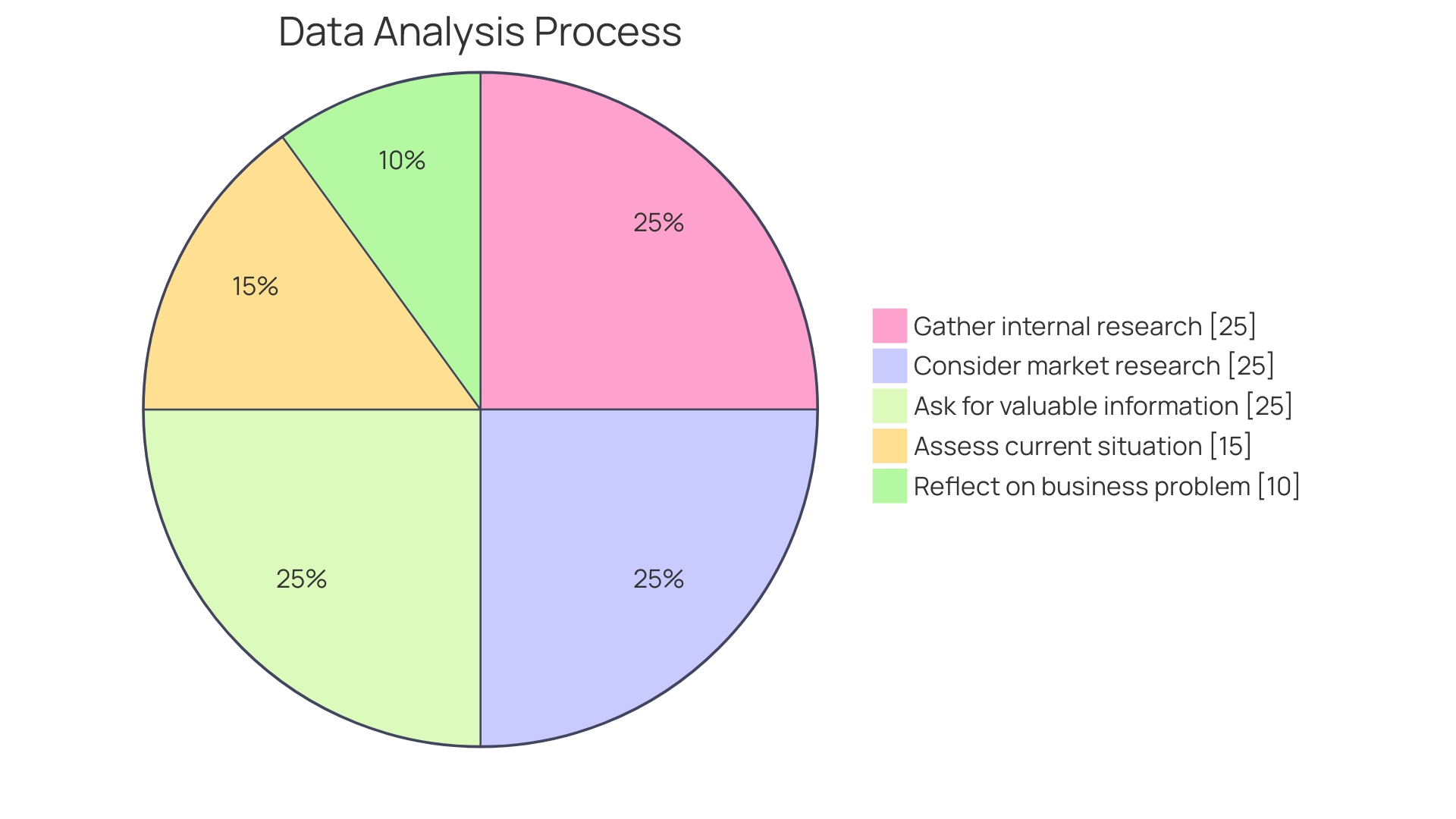
Case Studies and Success Stories
Success stories in e-learning app development offer a wealth of knowledge ripe for the picking, and dissecting these triumphs can light the way for your projects. Consider Nets, hailing from Copenhagen with a rich history in providing digital payment solutions. Their journey in transforming intricate technical data into engaging, easily digestible content is a testament to innovation in application design.
They faced the formidable task of taking dense tables and schemes and molding them into a format that magnetically pulls users towards self-directed learning and discovery.
The e-learning landscape is constantly being shaped by such forward-thinking entities. For example, Eduten, a company under the spotlight for a potentially transformative educational project in Mongolia, emphasizes a pressing need to bolster learning outcomes on a governmental scale. Their efforts to integrate proven educational tools into the fabric of the country's policies underscore the potency of strategic e-learning implementations.
Across the Baltic Sea, Estonia's impressive performance in the PISA study is, in part, thanks to the eKool platform, which stands as a paragon of effective e-learning. The platform exemplifies the utility of a cohesive system that connects students, families, and educational institutions while simultaneously lightening the teachers' administrative burdens. As educators embrace such systems, we observe not only a rise in efficiency but also a notable increase in student engagement and attendance.
The insights gleaned from these success tales underscore the significance of exhaustive project analysis before implementing e-learning strategies, especially emphasizing the need for clear business indicators and objectives. This prepares the groundwork for not only deploying engaging educational content but ensuring that it yields measurable improvements in business processes and learning outcomes.
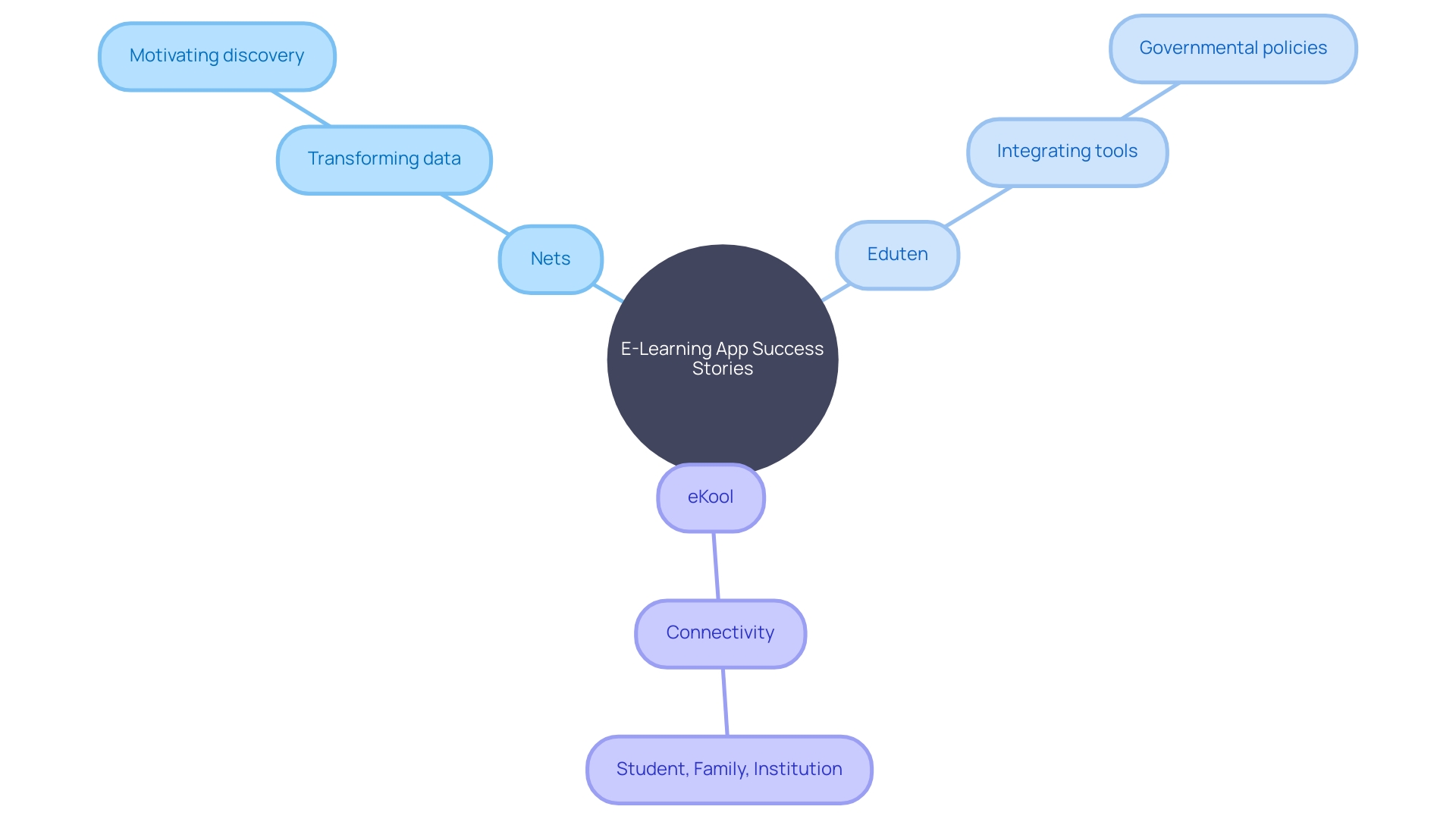
Future Trends in E-Learning Application Development
As the digital landscape reshapes the way we approach learning, the e-learning industry stands on the cusp of a new era powered by innovative trends and technology. Navigating through the future of e-learning application development, it's essential for educators and businesses to embrace game-changing strategies such as gamification, the implementation of artificial intelligence (AI), virtual reality (VR), adaptive learning, and the principles of microlearning. These facets not only streamline the learning experience but also make it more engaging and personalized.
For instance, gamification breathes new life into educational content, injecting a sense of play that enhances engagement and retention. By integrating game design elements into the learning process, learners are motivated to interact actively with the material. Similarly, Ai's role in customizing learning experiences to fit individual needs cannot be overstated, with systems intelligently adapting to the learner’s strengths and weaknesses, hence optimizing the education journey.
Furthermore, VR's immersive environments offer a 'learn by doing' experience that allows for interaction with complex subjects in a controlled virtual space. This is not just a futuristic dream; companies like Nets have faced the challenge of presenting technical data in an interesting, comprehensible way, underscoring the need for cutting-edge solutions that make learning both effective and captivating.
Additionally, the rise of adaptive learning methodologies facilitates a tailored educational path, enabling learners to focus on areas requiring their attention. In an environment where the continual skilling is mandatory due to stringent industry standards, instructional designers iterate the value in transforming traditional delivery methods into dynamic and learner-centric formats. Karmela Peček, an Instructional Designer at eWyse Agency, attested to the effectiveness of these methodologies in the financial sector’s training processes.
Finally, microlearning pinpoints the demand for concise, targeted instruction that fits into the busy schedules of modern learners. This bite-sized approach aligns perfectly with the current e-learning landscape's focus on accessibility and ease.
Indubitably, the intersection of AI and business models for e-Learning is no longer a mere possibility; it has become a necessity. Edtech companies are weaving AI into the fabric of their services to enhance effectiveness across customer-facing and internal activities. This sentiment echoes throughout the industry where the utilization of AI is not just an option but an imperative for staying competitive.
Statistics indicate an undeniable surge in the eLearning domain. With the global market size reaching approximately $250 billion in 2020, it's evident that the momentum of online platforms, virtual classrooms, and digital resources is not slowing down. As such, it remains crucial for key players in the education sector to leverage these transformative trends, ensuring they are not just keeping pace but setting the standard in an ever-evolving educational landscape.
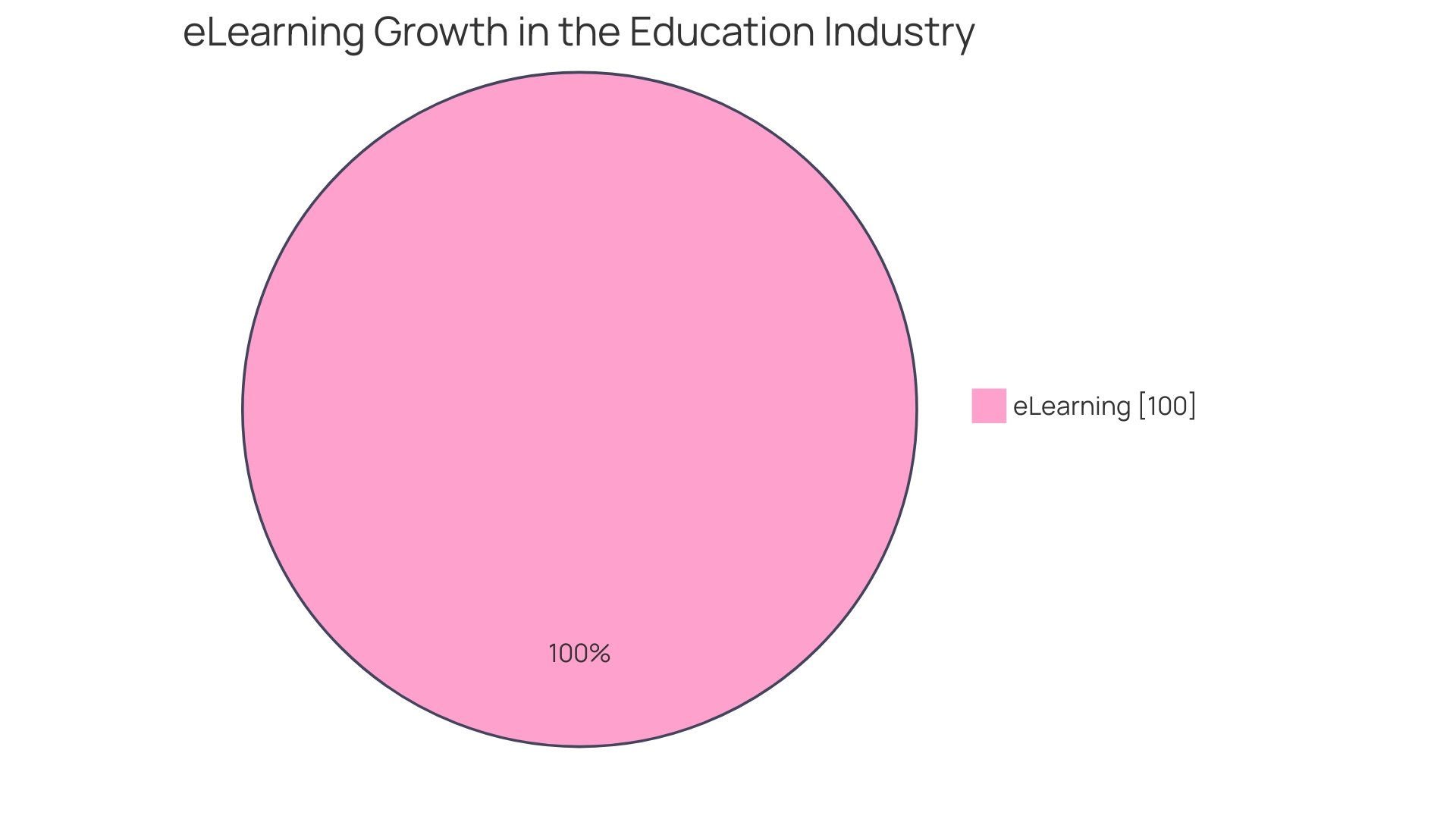
Conclusion
In conclusion, the e-learning industry has witnessed tremendous growth and has become a vital part of modern education. With a projected market size of $250 billion in 2020, online learning is here to stay and offers flexible and accessible digital platforms for learners worldwide.
When developing an e-learning application, it is essential to focus on key features like robust authentication, streamlined course management, and interactive lessons. Technologies such as learning management systems, content management systems, responsive design, and data analytics play a significant role in shaping the learner's experience.
Designing user-friendly interfaces is crucial, emphasizing aesthetics, ease of navigation, and inclusivity. Testing and quality assurance protocols are vital to ensure functionality and engagement. Launching and marketing strategies should prioritize innovation, understanding the target audience, and leveraging success stories and data analysis for continued improvement.
Looking ahead, the future of e-learning application development lies in trends like gamification, AI, VR, adaptive learning, and microlearning. Embracing these technologies will empower educators and businesses to provide personalized and engaging educational experiences.
In summary, the e-learning industry is poised for continued success. By embracing emerging technologies, prioritizing user-centric design, and delivering high-quality educational experiences, educators and businesses can position themselves at the forefront of this evolving educational landscape.
Create an engaging e-learning experience with our user-centric design solutions!





